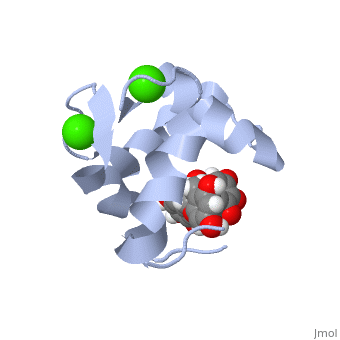2kdh
From Proteopedia
(Difference between revisions)
| Line 3: | Line 3: | ||
== Structural highlights == | == Structural highlights == | ||
<table><tr><td colspan='2'>[[2kdh]] is a 1 chain structure with sequence from [http://en.wikipedia.org/wiki/Homo_sapiens Homo sapiens]. Full experimental information is available from [http://oca.weizmann.ac.il/oca-bin/ocashort?id=2KDH OCA]. For a <b>guided tour on the structure components</b> use [http://oca.weizmann.ac.il/oca-docs/fgij/fg.htm?mol=2KDH FirstGlance]. <br> | <table><tr><td colspan='2'>[[2kdh]] is a 1 chain structure with sequence from [http://en.wikipedia.org/wiki/Homo_sapiens Homo sapiens]. Full experimental information is available from [http://oca.weizmann.ac.il/oca-bin/ocashort?id=2KDH OCA]. For a <b>guided tour on the structure components</b> use [http://oca.weizmann.ac.il/oca-docs/fgij/fg.htm?mol=2KDH FirstGlance]. <br> | ||
| - | </td></tr><tr><td class="sblockLbl"><b>[[Ligand|Ligands:]]</b></td><td class="sblockDat"><scene name='pdbligand=CA:CALCIUM+ION'>CA</scene>, <scene name='pdbligand=KDH:(2R,3R)-5,7-DIHYDROXY-2-(3,4,5-TRIHYDROXYPHENYL)-3,4-DIHYDRO-2H-CHROMEN-3-YL+3,4,5-TRIHYDROXYBENZOATE'>KDH</scene>< | + | </td></tr><tr id='ligand'><td class="sblockLbl"><b>[[Ligand|Ligands:]]</b></td><td class="sblockDat"><scene name='pdbligand=CA:CALCIUM+ION'>CA</scene>, <scene name='pdbligand=KDH:(2R,3R)-5,7-DIHYDROXY-2-(3,4,5-TRIHYDROXYPHENYL)-3,4-DIHYDRO-2H-CHROMEN-3-YL+3,4,5-TRIHYDROXYBENZOATE'>KDH</scene></td></tr> |
| - | <tr><td class="sblockLbl"><b>[[Gene|Gene:]]</b></td><td class="sblockDat">TNNC1, TNNC ([http://www.ncbi.nlm.nih.gov/Taxonomy/Browser/wwwtax.cgi?mode=Info&srchmode=5&id=9606 Homo sapiens])</td></tr> | + | <tr id='gene'><td class="sblockLbl"><b>[[Gene|Gene:]]</b></td><td class="sblockDat">TNNC1, TNNC ([http://www.ncbi.nlm.nih.gov/Taxonomy/Browser/wwwtax.cgi?mode=Info&srchmode=5&id=9606 Homo sapiens])</td></tr> |
| - | <tr><td class="sblockLbl"><b>Resources:</b></td><td class="sblockDat"><span class='plainlinks'>[http://oca.weizmann.ac.il/oca-docs/fgij/fg.htm?mol=2kdh FirstGlance], [http://oca.weizmann.ac.il/oca-bin/ocaids?id=2kdh OCA], [http://www.rcsb.org/pdb/explore.do?structureId=2kdh RCSB], [http://www.ebi.ac.uk/pdbsum/2kdh PDBsum]</span></td></tr> | + | <tr id='resources'><td class="sblockLbl"><b>Resources:</b></td><td class="sblockDat"><span class='plainlinks'>[http://oca.weizmann.ac.il/oca-docs/fgij/fg.htm?mol=2kdh FirstGlance], [http://oca.weizmann.ac.il/oca-bin/ocaids?id=2kdh OCA], [http://www.rcsb.org/pdb/explore.do?structureId=2kdh RCSB], [http://www.ebi.ac.uk/pdbsum/2kdh PDBsum]</span></td></tr> |
| - | <table> | + | </table> |
== Disease == | == Disease == | ||
[[http://www.uniprot.org/uniprot/TNNC1_HUMAN TNNC1_HUMAN]] Defects in TNNC1 are the cause of cardiomyopathy dilated type 1Z (CMD1Z) [MIM:[http://omim.org/entry/611879 611879]]. Dilated cardiomyopathy is a disorder characterized by ventricular dilation and impaired systolic function, resulting in congestive heart failure and arrhythmia. Patients are at risk of premature death.<ref>PMID:15542288</ref> Defects in TNNC1 are the cause of familial hypertrophic cardiomyopathy type 13 (CMH13) [MIM:[http://omim.org/entry/613243 613243]]. A hereditary heart disorder characterized by ventricular hypertrophy, which is usually asymmetric and often involves the interventricular septum. The symptoms include dyspnea, syncope, collapse, palpitations, and chest pain. They can be readily provoked by exercise. The disorder has inter- and intrafamilial variability ranging from benign to malignant forms with high risk of cardiac failure and sudden cardiac death.<ref>PMID:11385718</ref> <ref>PMID:16302972</ref> <ref>PMID:18572189</ref> <ref>PMID:19439414</ref> | [[http://www.uniprot.org/uniprot/TNNC1_HUMAN TNNC1_HUMAN]] Defects in TNNC1 are the cause of cardiomyopathy dilated type 1Z (CMD1Z) [MIM:[http://omim.org/entry/611879 611879]]. Dilated cardiomyopathy is a disorder characterized by ventricular dilation and impaired systolic function, resulting in congestive heart failure and arrhythmia. Patients are at risk of premature death.<ref>PMID:15542288</ref> Defects in TNNC1 are the cause of familial hypertrophic cardiomyopathy type 13 (CMH13) [MIM:[http://omim.org/entry/613243 613243]]. A hereditary heart disorder characterized by ventricular hypertrophy, which is usually asymmetric and often involves the interventricular septum. The symptoms include dyspnea, syncope, collapse, palpitations, and chest pain. They can be readily provoked by exercise. The disorder has inter- and intrafamilial variability ranging from benign to malignant forms with high risk of cardiac failure and sudden cardiac death.<ref>PMID:11385718</ref> <ref>PMID:16302972</ref> <ref>PMID:18572189</ref> <ref>PMID:19439414</ref> | ||
| Line 39: | Line 39: | ||
</StructureSection> | </StructureSection> | ||
[[Category: Homo sapiens]] | [[Category: Homo sapiens]] | ||
| - | [[Category: Li, M X | + | [[Category: Li, M X]] |
| - | [[Category: Robertson, I M | + | [[Category: Robertson, I M]] |
| - | [[Category: Sykes, B D | + | [[Category: Sykes, B D]] |
[[Category: Ca2+ binding protein]] | [[Category: Ca2+ binding protein]] | ||
[[Category: Ca2+ sensitizer]] | [[Category: Ca2+ sensitizer]] | ||
Revision as of 15:39, 19 January 2015
The Solution Structure of Human Cardiac Troponin C in complex with the Green Tea Polyphenol; (-)-epigallocatechin-3-gallate
| |||||||||||


